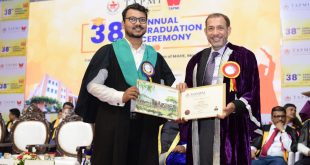The World has been gripped by various K-trends recently. But are you familiar with a Korean festival day which has K- food, k-beauty, and K entertainment all three in one? You might have heard about Korean festivals Seollal (Lunar New Year) and Chuseok (Mid-Autumn harvest Festival), but have you heard of Dano? Dano, also known as Surit-nal (day) is a Korean traditional holiday that falls on the 5th day of the fifth month of the lunar Korean calendar, this year 3rd June will be “Dano” festival day. The character ‘Dan (단)’ in Dano means the first, and the character ‘Oh’ means ‘five’. It had been regarded as a representative holiday along with Seollal and Chuseok before in Korea. it is the day with the most yang energy in the year, and various events are held nationwide.
Meaning
The meaning of Dano is the season of the beginning of the summer, and it represents a wind festival to end rice planting and pray for a good harvest.
K-Fashion and Beauty
According to Prophecy Market Insights, a specialized market research and analytics company’s 2020 article, the global K-beauty products market accounted for US$ 10.3 billion in 2019 and is estimated to be US$ 31.6 billion and to be registered a compounded annual growth rate 12.0% by 2029*.K-beauty products emphasize significantly on wellness and health, which could be attributed to it’s past traditions. One such example is dano festival which on this day women wash their hair in water boiled with sweet flag plant which is a common plant believed to make one’s hair shiny. Women also put Angelica polymorpha flowers in their hair out of the belief that its aroma would repel evil. People wore blue and red clothes and dyed hairpins red with the iris roots. Men wore iris roots around their waist to ward off evil spirits.
K-Food
Traditional foods consumed on this special day included various kinds of rice cakes, that have a wheel pattern on them as Surit-nal the former name of Dano, the word surit harks back to suri, meaning “wheel” and “nal” means day. Herbs wet with dew on Dano morning were also collected and consumed, as they were said to heal stomach aches and wounds.
K-entertainment
For entertainment many traditional games were played on Dano like –
1. Ssireum which a folk wrestling style and traditional national sport of Korea that began in the fourth century. Ssireum is also inscribed in the UNESCO Intangible Cultural Heritage Lists. It is also enlisted as the 131st Intangible Cultural Property.
2. Seokjeon, The stone battle game, where as a form of martial training two teams throw stones at one another. The first known record of the stone battle game in korea describes it being played by people of the Goguryeo dynasty in the sixth century C.E of Korean Peninsula.
3. Taekkyon – Taekkyon is the first martial art enlisted as the UNESCO Intangible Cultural Heritage. It is also the 76th Intangible Cultural Property of South Korea. It is Taekkyon it is said has also influenced the name and conceptualization of Taekwondo.
4.Swing games
Traditionally the swing game was played by women, while Ssireum was a wrestling match among men at Dano festival. In addition, mask dance used to be popular among peasants due to its penchant for satirical lyrics flouting local aristocrats.
Though, the celebration of Dano has become weak in Korea these days, remembering and appreciation of the traditions has important meaning and stance. Tradition comprises our root or origin of identity. I have observed many similarities between the two countries, India and Korea more in its traditions, we can say we are connected and have shared similar root like family.
 Newspatrolling.com News cum Content Syndication Portal Online
Newspatrolling.com News cum Content Syndication Portal Online






